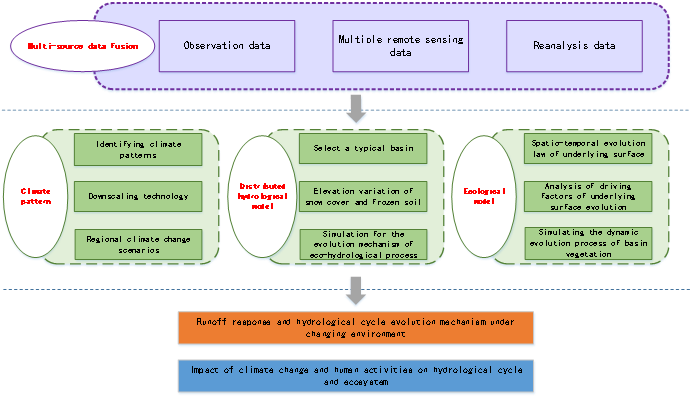
(Key research project of the National Science Foundation of China)
The “Study on the mechanism of runoff response and hydrological process evolution in the Yarlung Zangbo River basin under a changing environment” is a key project approved in 2017. Prof. Zongxue Xu serves as the project leader. The project, which takes the Yarlung Zangbo River basin as the study area, combines ground observation data with satellite remote sensing data as well as statistical downscale output results. It will investigate the uses of multi-source data fusion technology, with the aim of resolving the challenging problem to develop a hydrological model in a ungagged river basin. The characteristics of runoff evolution in the study area will be analyzed, and the key impact factors of runoff evolution along with the source of runoff recharge and its spatial and temporal distribution will be investigated. Using multiple remote sensing data, the underlying surface of the study area will be modelled and analyzed. A terrestrial ecosystem model will be developed to elucidate the dynamic evolution mechanism of a vegetated ecosystem. The mechanism of runoff generation and routing under the condition of a complex underlying surface will be studied using field experimental data obtained for a representative alpine area of the Yarlung Zangbo River basin, and a distributed eco-hydrological model will be developed based on a consideration of snowmelt runoff and frozen soil. As a result of bidirectional coupling of the hydrological cycle and dynamic vegetation processes, evolution laws of hydrological and ecological process in the Yarlung Zangbo River basin will be analyzed. Consequently, the mechanism of runoff response and the evolution of hydrological processes in the Yarlung Zangbo River basin under a changing environment will be identified. The results obtained using this model will be used to provide a theoretical foundation and scientific and technological support for addressing a series of major issues such as water resources management and ecological restoration in Tibet area.

